Firing the Stockless Shortie
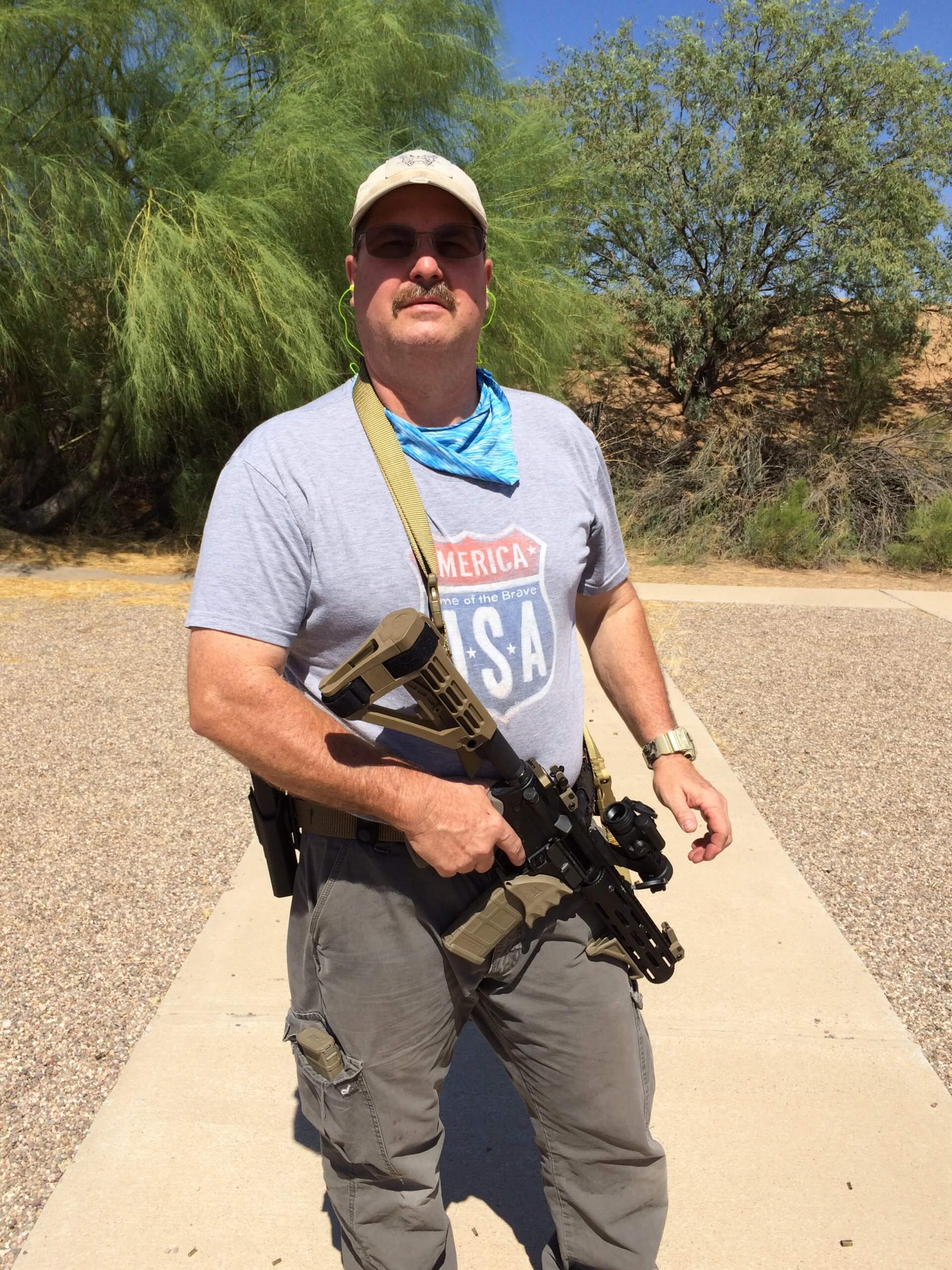
Call it what you want.
Some call them PDWs, personal defense weapons, after a unique brand of firearms initially considered for downed aircrew survival. Some call them “AR pistols” and “AK pistols.”
Those are legal terms for getting around silly laws that never stopped a single crime, but created a class of criminal weapons. In the US, a projectile launcher with a rifled barrel less than 16″ long is legally a “pistol.” A pistol could not have a stock, unless you applied for, paid for, and received a SBR (short barreled rifle) tax stamp.
For a while, people got away with “wrist braces,” patterned after concepts kicked around for PDWs in the 1960s. Braces will soon be a thing of the past. If you want a “shortie,” you’ll have to get a SBR tax stamp, and if you do, you might as well have a “real” stock.
With a collapsible stock, like on an M4, you still have SOME stock to play with when it’s in the collapsed position. Not so much with side folders when they are folded.
I don’t recommend firing any long gun without bracing the stock against your shoulder, if you have a choice.
But some threats are so close, and some environments are so tight, you might want to leave the stock collapsed / folded, or fire with the stock over your shoulder, or under your arm.
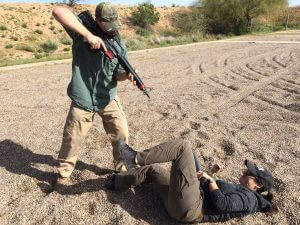
You might, for example, find yourself in tight quarters (think of running a militia / protester / bandit roadblock in your car), having “neither the time nor the inclination” to fold out the stock.
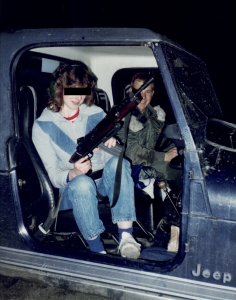
If this jeep had a door, this Wyoming Weaponcraft student might’ve been forced to leave the skeleton stock of this Ruger AC-556 folded, in order to maneuver around in the tight confines of the Scrambler cab.
We chose to leave it folded because we were practicing stockless technique.
(Wyoming Weaponcraft was a predecessor of Heloderm LLC.)
Stockless Options
If you need to run it stockless, you’ll essentially have four options:
- Brace your gun hand wrist
- Push against a sling
- Squeeze it
- Stretch it
Bracing It
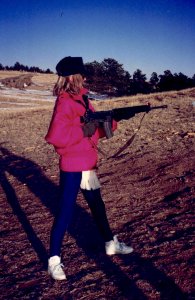 Bracing your dominant wrist against your pectoral or ribcage is an option, particularly at close range, where you can get away with body indexed, below line of sight aiming.
Bracing your dominant wrist against your pectoral or ribcage is an option, particularly at close range, where you can get away with body indexed, below line of sight aiming.
It’s not as stable as tucking a stock under your arm, but more maneuverable in tight quarters.
Pushing It
This method was pioneered by counterterrorism teams running H&K MP5Ks. The kurtz (German for short) version of the MP5 has a pistol grip and a broom handle. Some versions had a collapsible stock. Personal protection teams–for example, OSI agents protecting USAF generals–might run it on a cross-shoulder single point sling, under a jacket.
Responding to an executive ambush, you might not have time to extend the stock, if you even have one. If the sling is adjusted correctly, you can PUSH FORWARD WITH BOTH HANDS against the tension of the sling. The sling has to be set up short enough to still have some slight bend at your elbows when it’s at full extension.
Louis Awerbuck taught me pushing against a sling in 1990. It works at close range, but I was never able to control the motion of the muzzle as well as I wanted with it (when the stock is used, the MP5 is a very controllable gun).
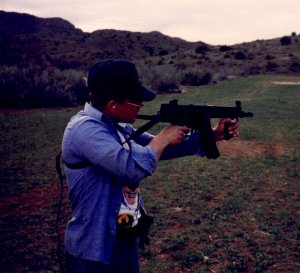
I taught this method to OSI agents well into this century, but only as a close range counter-ambush technique, when drawing from under a cover garment. When we had folding / collapsing stocks, reaction to contact drills looked something like this:
- Start with stock collapsed, under a cover garment
- Whip it out and fire a few auto bursts at close range targets while moving laterally
- Reach cover, extend the stock and select semi-auto
- Finish the drill with accurate semi-auto shots against a more distant target
Whether or not you have a foregrip on your shortie, you can use the same method of running it out against the pull of the sling.
Hold tight, though. USE EXTREME CAUTION NOT TO LET YOUR SUPPORT HAND SLIP IN FRONT OF THE MUZZLE.
Squeezing It
Another stockless option would be to pull on the front with your support hand while pushing with your dominant hand, like you would running a pistol.
This method provides some isometric tension, but with shorties, it has some drawbacks.
Advantage: It’s intuitive, since you do that with pistols.
Disadvantage: When you pull on the front of something long and stiff, and push on the back of it, it WANTS to move sideways, up, or down.
Of the three stockless options, pulling on the front and pushing on the back is probably the least effective.
Stretching It
The most effective way I’ve found for firing stockless (or stock folded) shorties is the “Suchka hold:” pushing forward on the front with the support hand, while pulling on the back (the pistol grip) with your dominant hand.
Say to yourself,
“My shortie is a rope; to point it straight I must pull it taught.”
As long as your support hand is between you and the target, pulling on the back encourages that alignment. The isometric tension between the two provides plenty of control for small, lightweight rifles.
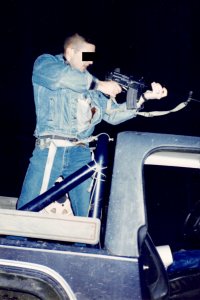
I’m told stretching it also works with the short, stockless, bird’s head gripped shotguns, like the Shockwave, although I have less personal experience with those.
With either type, it’s important to SQUEEZE HARD WITH THE FRONT HAND and DON’T LET YOUR HAND SLIP OFF IN FRONT OF THE MUZZLE, just as it is with pushing against the sling above.
Ps. If you don’t know what a “suchka” is, and you want to know, you can read The So-called Krinks in the EFK section.
–George H, Lead Instructor, Heloderm LLC
